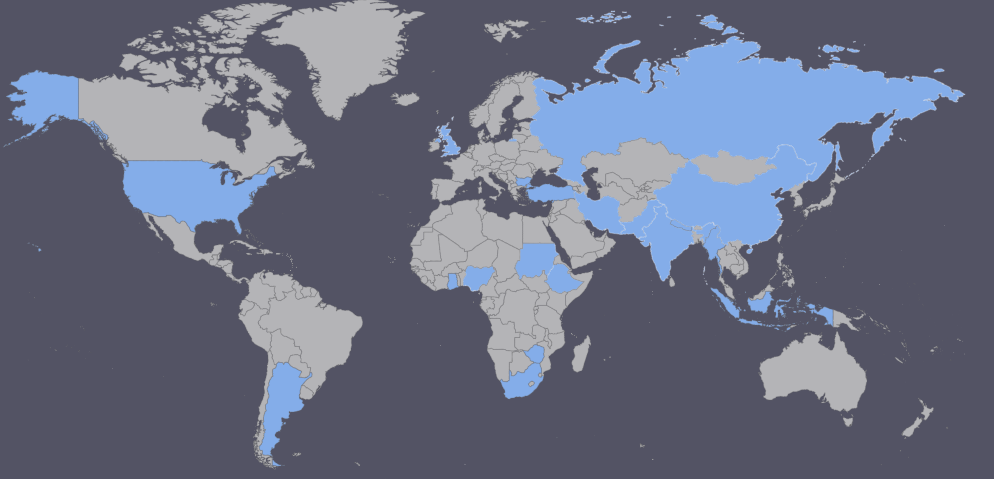Coulomb Stress Changes after 11 May 2017 Askale-Erzurum (NE Turkey) Earthquake (Mw = 4.7)
Keywords:
Acceleration, Peak ground acceleration, Coulomb stress change, Earthquake, ErzurumAbstract
Erzurum city (NE Turkey), one of the largest provinces of the eastern Anatolia region are surrounded by many active tectonic units. These tectonic units generated many earthquakes that led to the loss of life and property during the historical and instrumental period. The 4.7 magnitude earthquake in Askale-Erzurum (NE Turkey) on May 11, 2017 reminded us the active tectonic units in the region. In this study, Coulomb Stress change was investigated using Askale earthquake and its aftershocks. Especially after this earthquake, a stress of ~1 bar is observed in Tercan, Maden, Ilıca and N part of Cat region. Erzurum managed by compression tectonics as a result of the orogenic movements, always has the potential to generate a devastating earthquake. Considering these reasons, earthquake-soil-structure relationship should be noted while making constructions in Erzurum and its surroundings.
References
Akbas, B., Akdeniz, N., Aksay, A., Altun, I., Balci, V., Bilginer, E., 2013. Turkey Geological Map. MTA and AFAD, Ankara, Turkey. They are available at: http://www.mta.gov.tr (last accessed July 2019) and https://deprem.afad.gov.tr/ (last accessed July 2019), respectively.
Aydin, U., 2015. Estimation of seismodynamics differences and lateral variations of coda Q in Eastern Anatolia. Arabian Journal of Geosciences 8, 6363-6370.
Bayrak, E., Ozer, C., Perk, S., 2020. The Ground-Motion Attenuation Comparison: A case study for the 2017/05/11
Askale earthquake (Mw4.7). Brilliant Engineering 3, 22-26.
Emre, O., Duman, T.Y., Ozalp, S., Elmaci, H., Olgun, S., Saroglu, F., 2013. 1/1.250.000 scaled Turkey active fault map. MTA Special Publication, it available at: http://www.mta.gov.tr/ (last accessed June 2018).
Emre, O., Duman, T. Y., Ozalp, S., Saroglu, F., Olgun, S., Elmaci, H., Can, T., 2018. Active fault database of Turkey. Bulletin of Earthquake Engineering 16, 3229-3275.
Keskin, M., Pearce J.A., Mitchell, J.G., 1998. Volcano-Stratigraphy and Geochemistry of Collision-Related Volcanism on the Erzurum-Kars Plateau, Northeastern Turkey. Journal of Volcanology and Geothermal Research 85 (1-4), 355-404.
Koçyiğit, A., Canoğlu, M.C., 2017. Neotectonics and Seismicity of Erzurum Pull-apart Basin, East Turkey. Russian Geology and Geophysics 58, 99-122.
Ozer, C., 2019. Investigation of the Local Soil Effects of Erzurum and its Surroundings using SSR and HVSR Methods Erzurum. DEUFMD 21 (61), 247-257.
Ozer, C., Kocadagistan, M.E., Perk, S., 2019a. Earthquake Monitoring Network of Erzurum: ATANET. International
Journal of Scientific and Technological Research 5 (8), 35-47 (in Turkish).
Ozer, C., Ozyazicioglu, M., Gok, E., Polat, O., 2019b. Imaging the Crustal Structure Throughout the East Anatolian Fault Zone, Turkey, by Local Earthquake Tomography. Pure and Applied Geophysics 176, 2235-2261.
Ozer, C., Ozyazicioglu, M., 2019. The Local Earthquake Tomography of Erzurum (Turkey) Geothermal Area. Earth
Sciences Research Journal 23 (3), 209-223.
Ozturk, S., 2018. Earthquake hazard potential in the Eastern Anatolian Region of Turkey: seismotectonic b and Dc-values and precursory quiescence Z-value. Frontiers of Earth Science 12, 215-236.
Parsons, T., Toda, S., Stein, R.S., Barka, A., Dieterich, J.H., 2000. Heightened odds of large earthquakes near Istanbul: an interaction-based probability calculation. Science 288, 661-666.
Sunbul, F., Sumbul, A.B., 2018. Evaluation of Coulomb Stress Criteria in Earthquake Interactions; East Anatolian Fault Line. Karaelmas Science and Engineering Journal 8 (2), 523-535.
Temiz, U., Gökten, U., 2011. Ms 6.8 19 Nisan 1938 Akpınar (Kırşehir) Depreminin Coulomb Gerilme Analizi. Geological Bulletin of Turkey 54 (3), 81-92 (in Turkish).
Toda, S., Stein, R. S., Reasenberg, P.A., Dieterich, J.H., 1998. Stress transferred by the Mw=6.9 Kobe, Japan, shock: Effect on after shocks and future earthquake probabilities. Journal of Geophysical Research 103, 24543-24565.
Yarbaşı, N., Kalkan, E., 2009. Geotechnical Mapping for Alluvial Fan Deposits Controlled by Active Faults: A Case Study in the Erzurum, NE Turkey. Environmental Geology 58, 701-714.
Wessel, P., Smith, W.H.F., Scharroo, R., Luis, J.F., Wobbe, F., 2013. Generic Mapping Tools: Improved version released. EOS Transactions American Geophysical Union 94, 409-410.
Downloads
Published
Issue
Section
License
Copyright (c) 2020 Caglar Ozer

This work is licensed under a Creative Commons Attribution-NonCommercial-NoDerivatives 4.0 International License.
The authors keep the copyrights of the published materials with them, but the authors are aggee to give an exclusive license to the publisher that transfers all publishing and commercial exploitation rights to the publisher. The puslisher then shares the content published in this journal under CC BY-NC-ND license.



